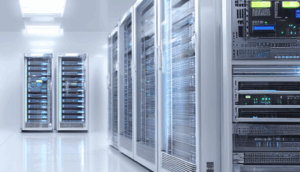In the ever-evolving landscape of modern industry and healthcare, reliable and efficient data communication is paramount. Industrial and medical environments demand robust cabling solutions capable of transmitting critical data with minimal latency and maximum integrity. These specialized cables are not merely conduits for information; they are the lifelines of interconnected systems, enabling real-time monitoring, precise control, and seamless integration of complex machinery and equipment. This article delves into the critical role of industrial data communication cables in enhancing communication efficiency within these demanding sectors, exploring their construction, applications, and the crucial factors influencing their performance.

Industrial data communication cables differ significantly from standard consumer-grade cables due to the stringent environmental conditions they must withstand. Exposure to extreme temperatures, corrosive chemicals, mechanical stress, and electromagnetic interference (EMI) are commonplace in industrial settings. Therefore, these cables are engineered with specialized materials and construction techniques to ensure durability, longevity, and consistent performance. The shielding, insulation, and jacket materials are carefully selected to resist degradation from these harsh elements, maintaining signal integrity over extended periods. Furthermore, robust connectors and secure termination methods are essential to prevent connection failures, which can lead to costly downtime and operational disruptions.
Within the industrial automation sector, data communication cables are integral to various applications, including programmable logic controllers (PLCs), industrial robots, human-machine interfaces (HMIs), and distributed control systems (DCS). These cables facilitate real-time data exchange between these components, enabling coordinated operation and precise control of industrial processes. For instance, in a manufacturing plant, industrial data cables connect sensors that monitor production parameters, such as temperature, pressure, and flow rate, to a central control system. This system then analyzes the data and adjusts the process parameters accordingly, optimizing efficiency and ensuring product quality. Furthermore, industrial Ethernet cables, often employing protocols like PROFINET or EtherNet/IP, provide high-speed data transfer capabilities, supporting bandwidth-intensive applications such as video surveillance and machine vision systems.
In the medical field, data communication cables play a vital role in connecting sophisticated medical equipment, such as MRI machines, CT scanners, patient monitoring systems, and diagnostic imaging devices. These cables must meet stringent regulatory requirements to ensure patient safety and data privacy. Medical-grade cables are often designed with biocompatible materials to minimize the risk of allergic reactions or adverse effects. Furthermore, shielding is crucial to prevent electromagnetic interference from disrupting sensitive medical equipment and ensuring accurate diagnostic readings. The reliability of these cables is paramount, as any malfunction can have serious consequences for patient care. High data rates and reliable connections ensure the efficient transmission of medical images and vital patient data.
Selecting the appropriate industrial data communication cable requires careful consideration of several factors, including the application requirements, environmental conditions, data transmission speed, and regulatory standards. Cable impedance, signal attenuation, and crosstalk are critical parameters that affect signal integrity. Proper cable installation and termination are also essential to ensure optimal performance and prevent premature failure. Regularly testing and inspecting cables for signs of wear and tear can help prevent unexpected downtime and maintain the reliability of industrial and medical systems. Investing in high-quality cables from reputable manufacturers is a worthwhile investment, as it can significantly improve communication efficiency, reduce maintenance costs, and enhance overall system performance. Future advancements in cable technology, such as fiber optics and wireless communication, promise to further enhance data communication capabilities in industrial and medical environments, paving the way for even more efficient and interconnected systems.